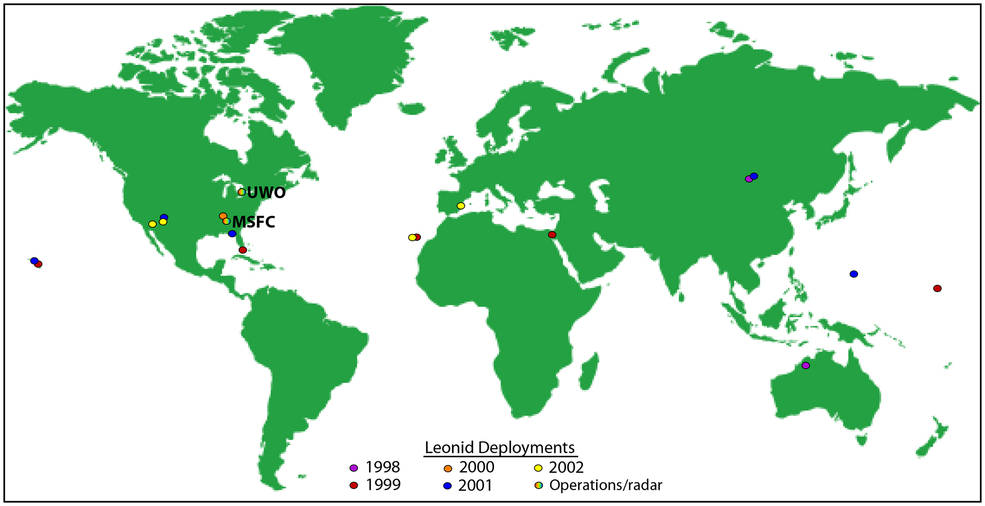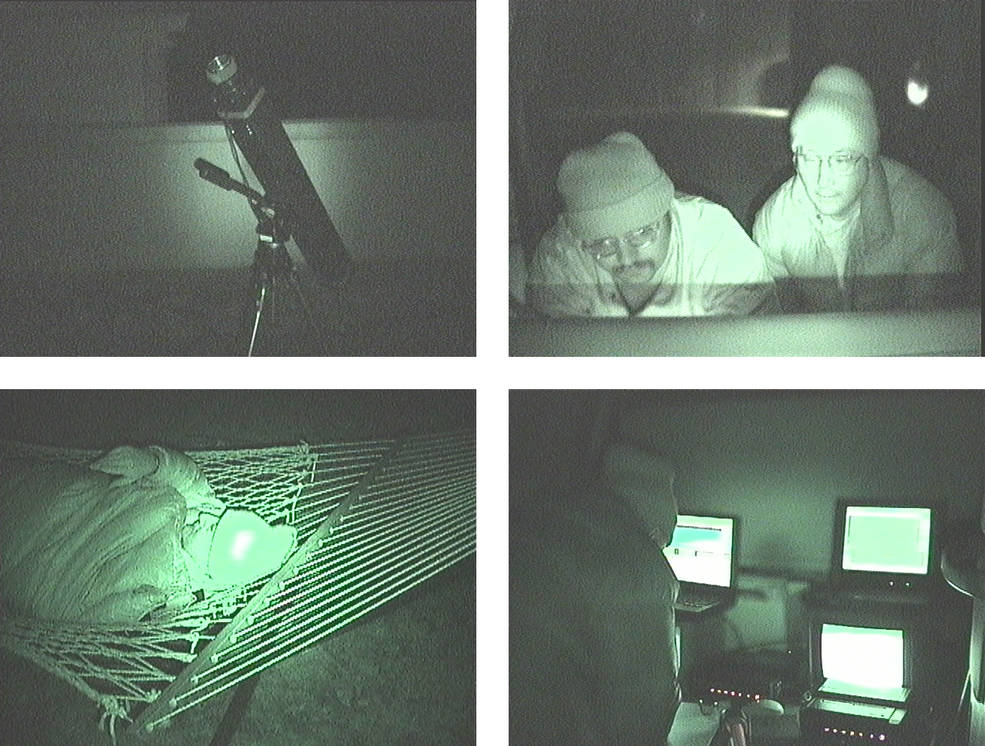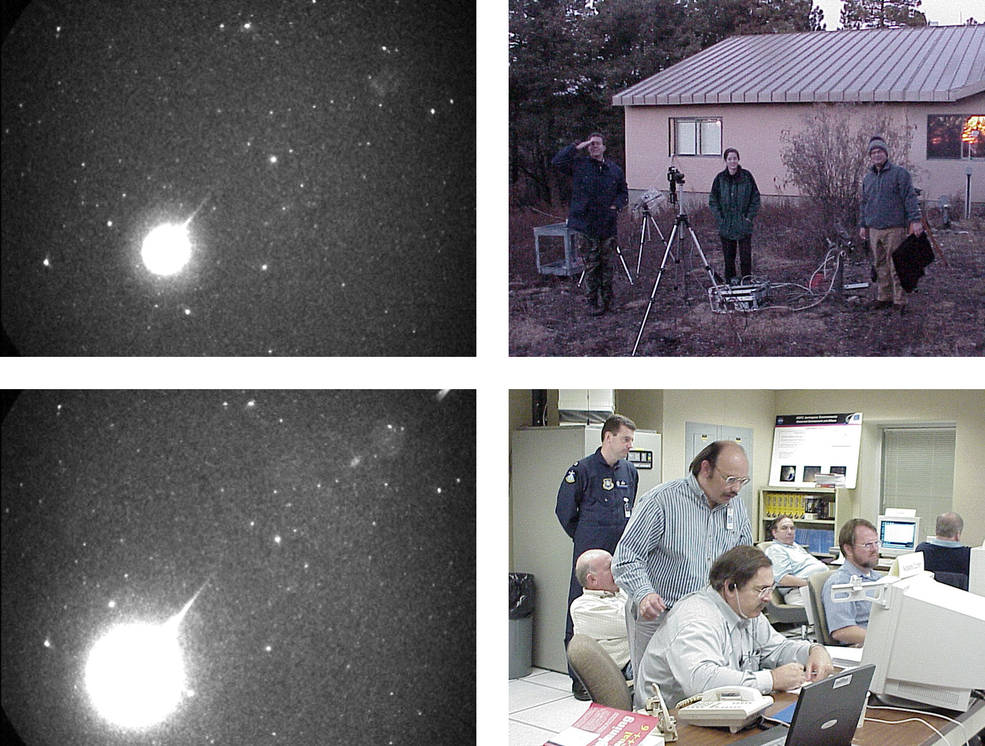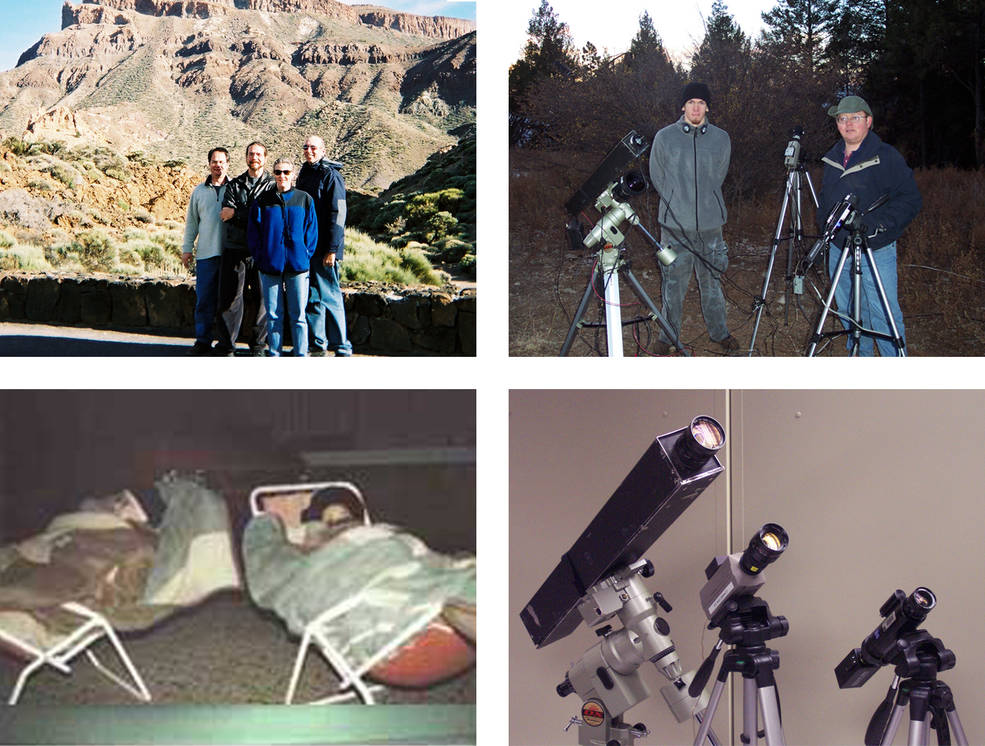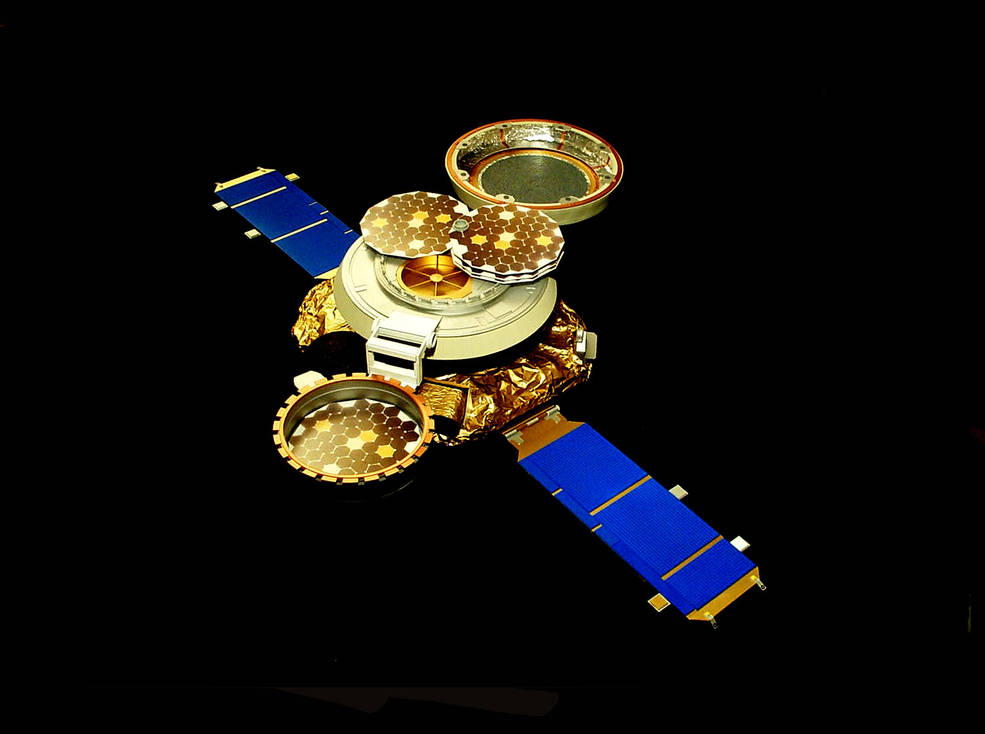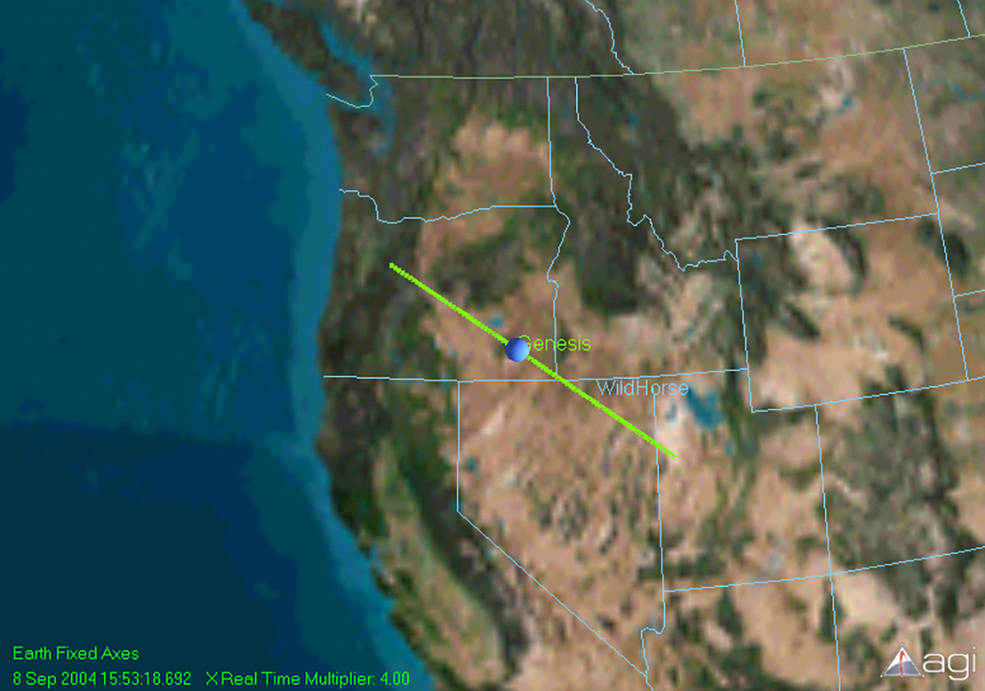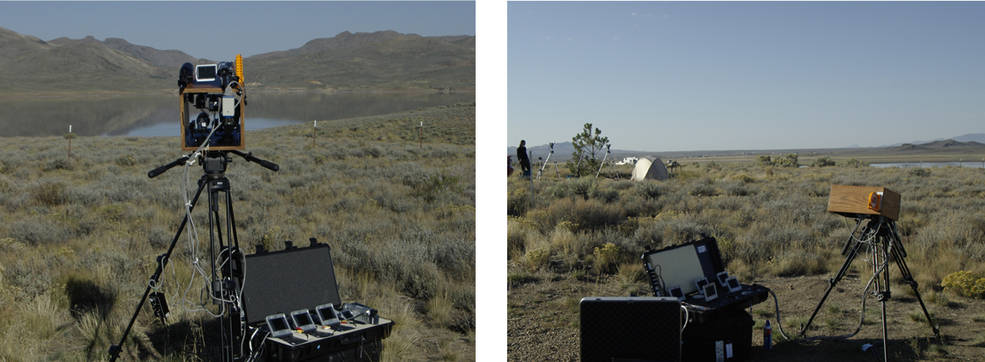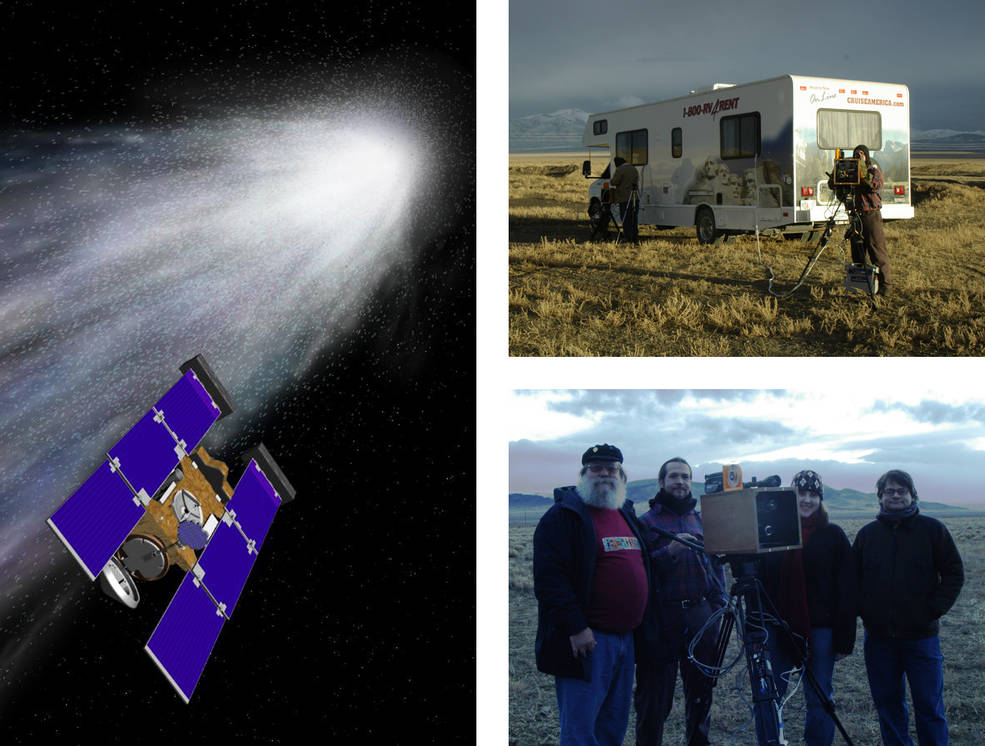MEO: Research Projects
Current Projects | Past Projects
Past Projects
The Meteoroid Environment Office (MEO) has been involved in several past projects. The underlining goal of these projects was to gain a better understanding of the meteoroid environment so that MEO environment models could be improved. Notable projects are listed below.
Leonid Observations
The Leonid meteor showers of 1998-2002 were very active with rates peaking at 3700 meteors per hour in1999. The Space Environments Team (of which the MEO is a part) worked with experts at the University of Western Ontario (UWO) and the US Air Force to deploy multiple Leonid observing teams world-wide, all coordinated from Marshall Space Flight Center (MSFC).
1998: Ulaan Bataar, Mongolia; northwest Australia
1999: Key West, Florida; Alert, Canada; Las Palmas, Canary Islands; Negev Desert, Israel; Kwajalein Atoll, Marshall Islands; Haleakala, Hawaii
2000: Columbia, TN; Huntsville, Alabama
2001: Huntsville, Alabama; Eglin Air Force Base, Florida; Ulaan Bataar, Mongolia; US Territory of Guam; Maui, Hawaii; Apache Point Observatory, New Mexico
2002: Canary Islands; Calar Alto, Spain; Kitt Peak National Observatory, Arizona; Apache Point Observatory, New Mexico
Genesis Re-Entry
The Genesis spacecraft re-entry represented a unique opportunity to observe a “calibrated meteor” from northern Nevada. Knowing its speed, mass, composition, and precise trajectory made it a good subject to test some of the algorithms used to determine meteoroid mass from observed brightness. It was also a good test of an inexpensive set of cameras which could be deployed to observe future shuttle reentries.
The MEO deployed a team to Wild Horse, Nevada to observe the Genesis re-entry in September 2004. The team successfully captured the event on four video cameras in sequence and also detected it via forward scatter radar. NASA TM 2005-214192 describes the video observations and their analysis, compares the results with a simple photometric model, describes the forward scatter radar experiment, and lists lessons learned from the expedition and implications for the Stardust reentry in January 2006 as well as future shuttle reentries.
Stardust Re-Entry
Similarly, the Stardust spacecraft re-entry represented another opportunity to observe a “calibrated meteor” from northern Nevada. The MEO deployed a team to Battle Mountain, Nevada to observe the re-entry in January 2006. A video record of the event was not captured due to poor weather conditions (snow). Audio of the re-entry was recorded from the forward scatter radar equipment.
The MEO worked together in cooperation with Los Alamos National Laboratory and Lincoln Laboratories with the objective of determining meteoroid masses, orbits, ballistic coefficients, and densities. The ALTAIR radar on Kwajalein Atoll was used to make approximately 25 hours of observations of sporadic and shower meteoroids simultaneously at VHF and UHF.
The goals of this MEO program were as follows:
- Determine a realistic density distribution and add it to the NASA MSFC Meteoroid Engineering Model (MEM).
- Investigate the meteoroid velocity distribution at small masses.
- Understand the biases in meteor observations produced by high power systems, like ALTAIR, and those of the meteor patrol radars, such as the Canadian Meteor Orbit Radar.
The MEO and colleagues from Brown University have conducted a series of hypervelocity impact experiments at the NASA Ames Vertical Gun Range (AVGR) in order to better determine luminous efficiency estimates. It is necessary to determine this relationship between impact flash brightness and impactor kinetic energy so that a model of the hypervelocity ejecta from large impacts can be developed for use in lunar vehicle and spacesuit design.
Using the AVGR, the MEO conducted 11 successful shots: quarter-inch diameter Pyrex projectiles were shot into a finely ground pumice target at velocities ranging from 2.5 to nearly 5.5 km/sec, at impact angles of 30°, 45°, and 90°. The MEO stationed 5 cameras at various viewpoints around the target vacuum chamber, taking video and spectral data of the impact flash created when the projectile hit the target. The luminous efficiency determined will be used to estimate the energy and thus the size of meteoroids impacting the moon from the flashes detected at the NASA MSFC Automated Lunar and Meteor Observatory (ALAMO).
A more elaborate series of hypervelocity gun experiments is planned. This will not only enable more luminous efficiency measurements, but also allow for the study of the cratering process in detail. Sizes and trajectories of the ejecta produced by the experimental craters will be recorded and this data used to calibrate sophisticated hydrocodes that will be used to model impacts of large meteoroids on the moon and the resulting ejecta field. These calculations will then form the basis of a realistic assessment of the hazard posed by lunar cratering events.




























